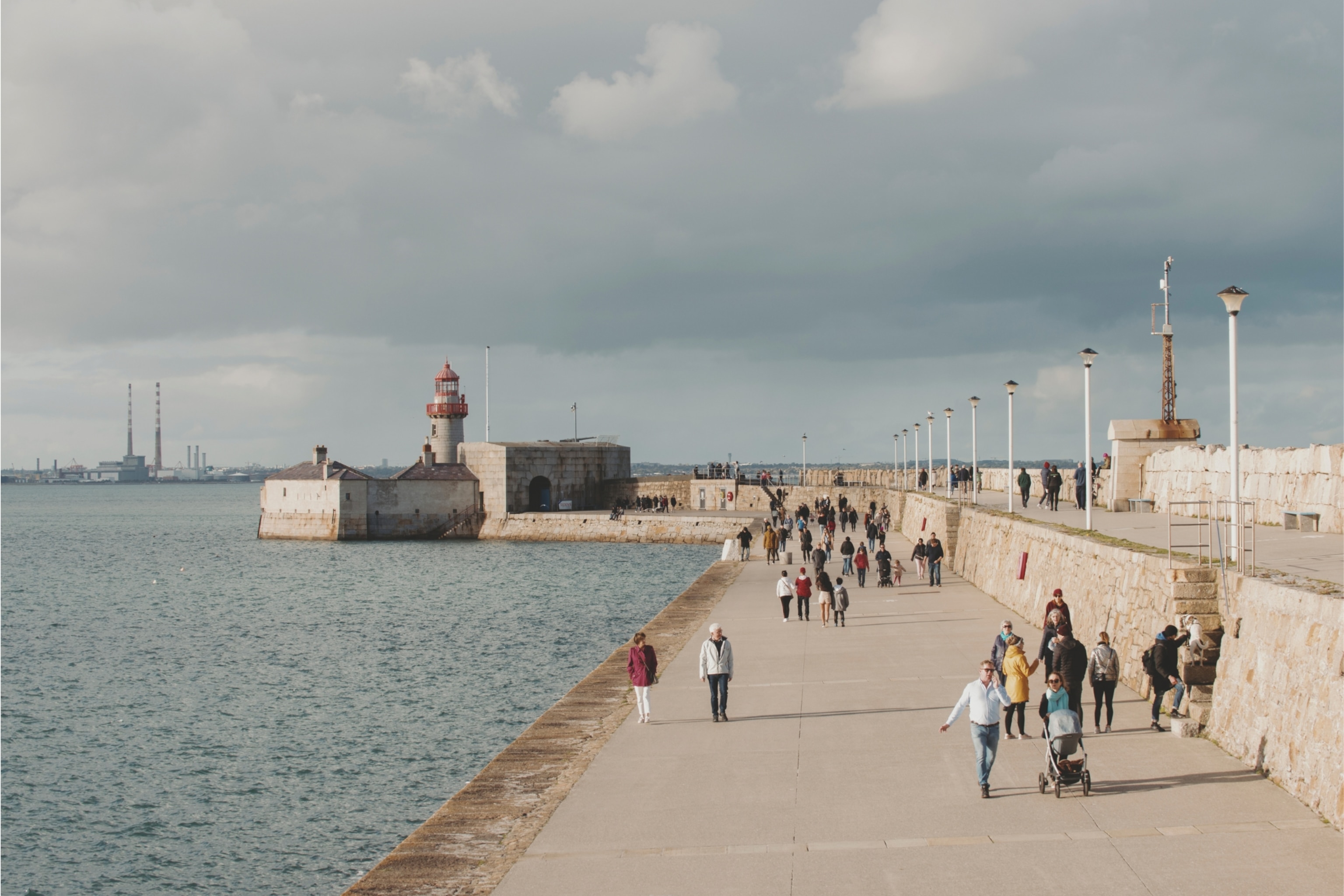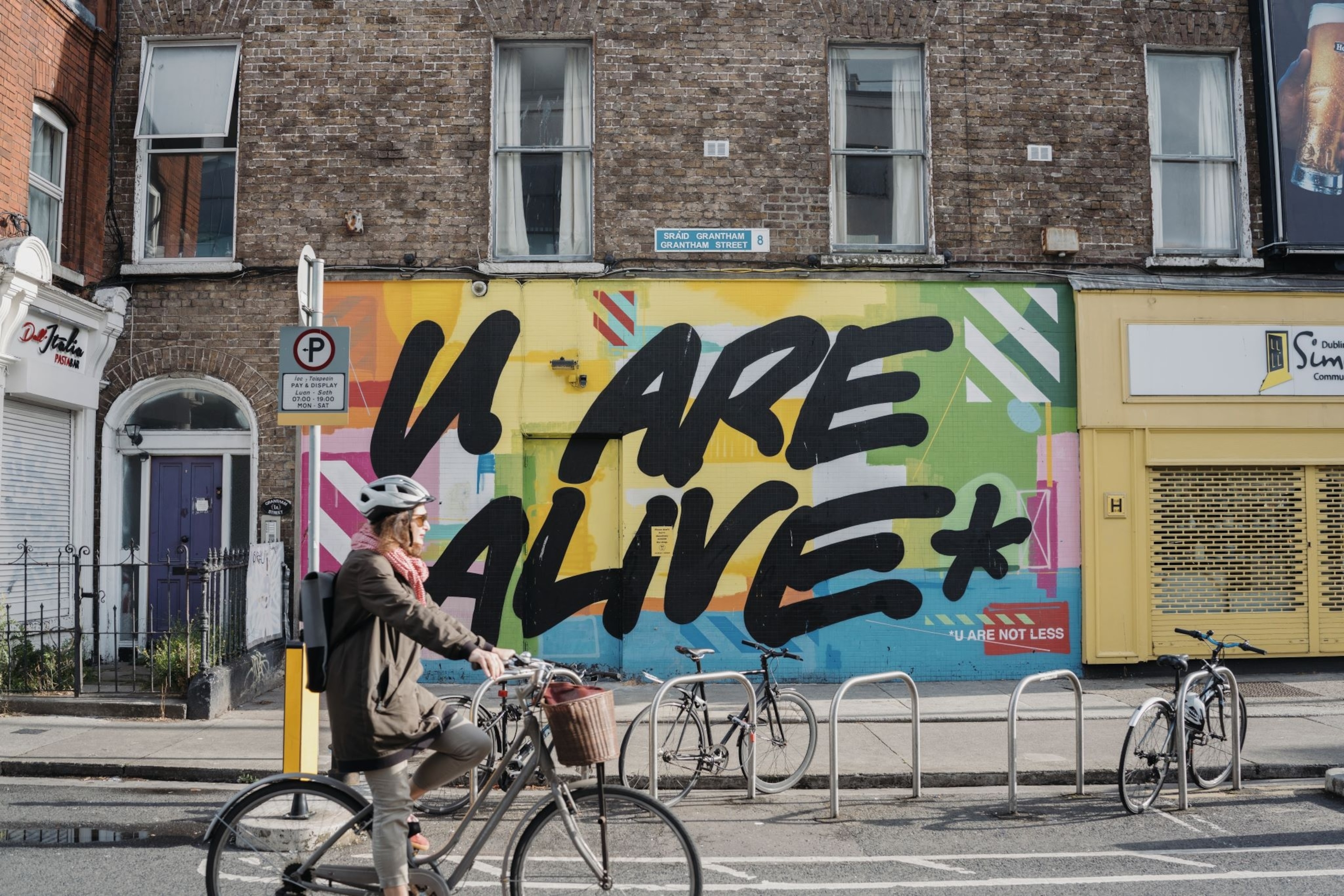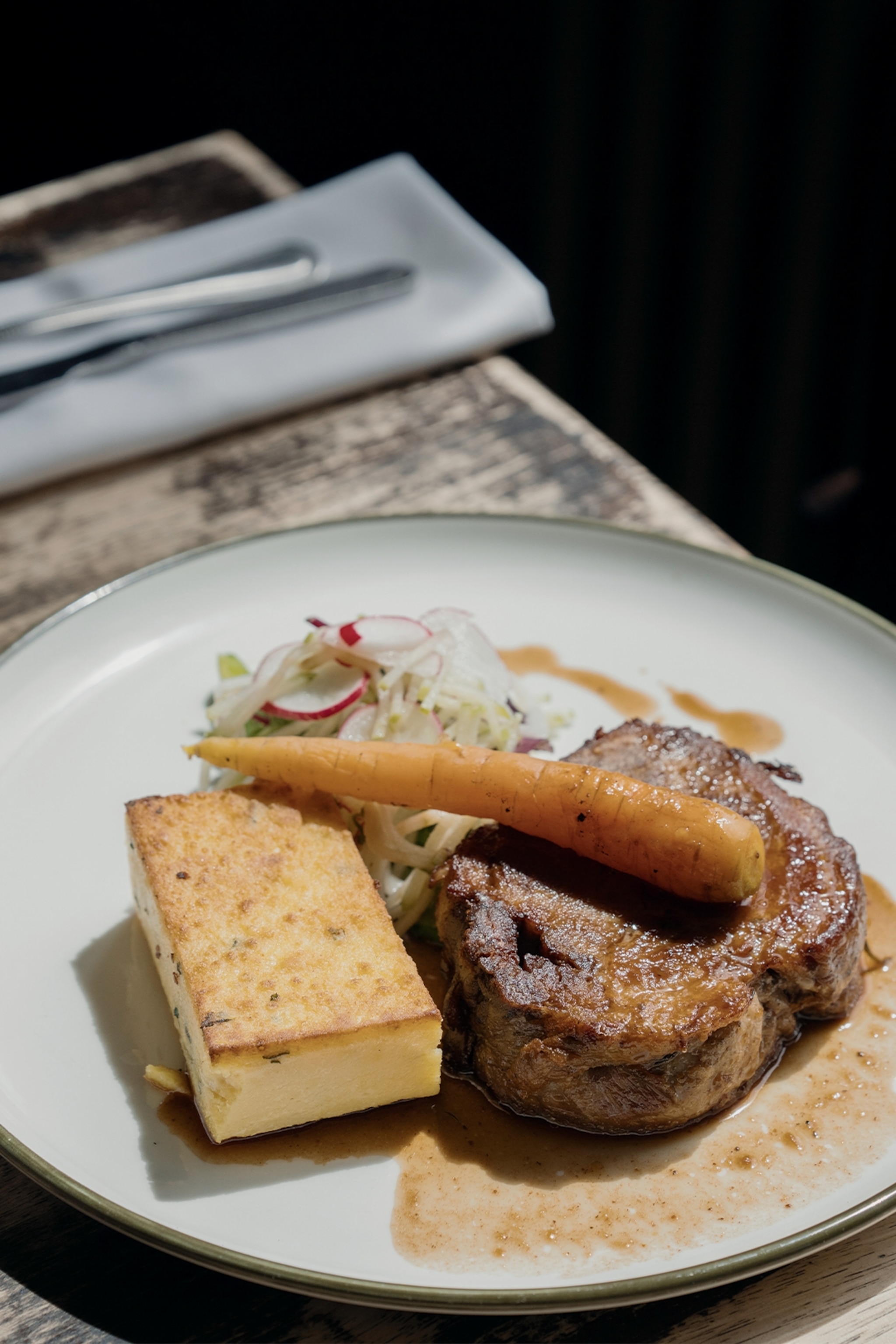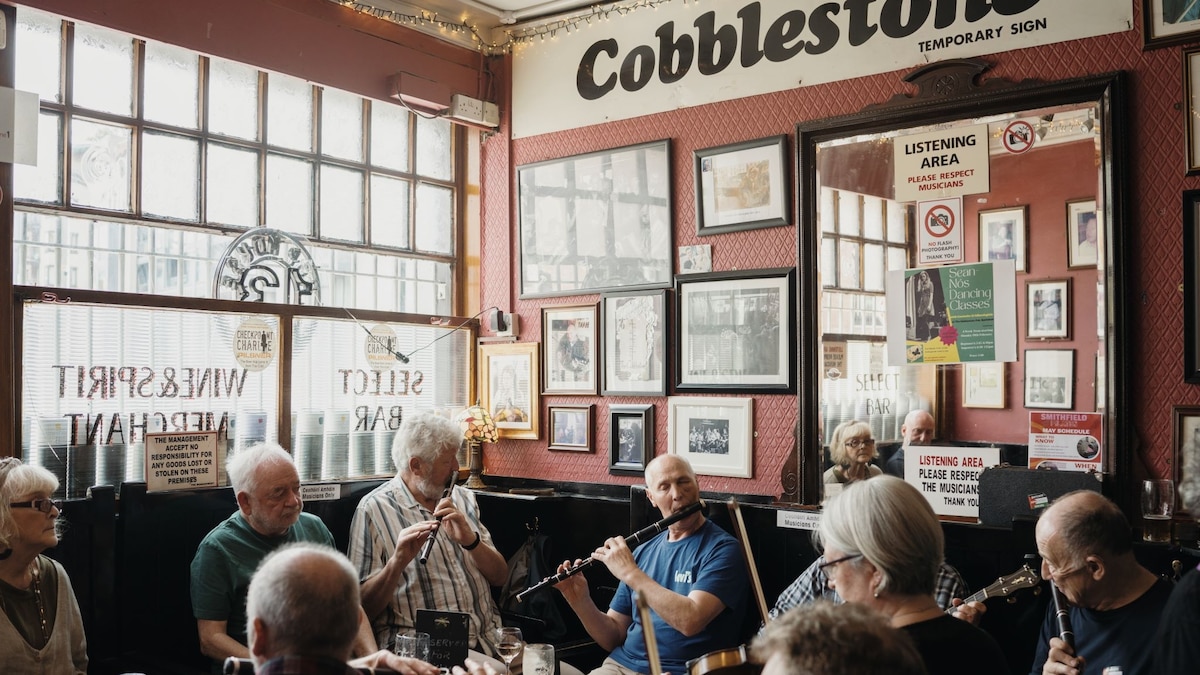Dublin is a city that’s impossible to ‘do’. It has its big hits: there’s the Guinness Storehouse, where the ‘black stuff’ is brewed, tasted and revered; and there are taprooms that thump in the party district of Temple Bar. Dublin Castle sits near Trinity College, the country’s oldest and most illustrious university, which guards the Book of Kells, a treasured ninth-century manuscript. Literary giants like James Joyce made Dublin a UNESCO City of Literature and now stand alongside musicians like U2 and Sinéad O’Connor in its hall of fame — their legacy popping up across the city in street plaques, museums, former homes and studios.
But Ireland’s capital and biggest city doesn’t have a huge number of defining landmarks to tick off. Which suggests something the locals will readily tell you: this is a place about the in-between moments. Take a beat, and you’ll see Dubliners weaving past their icons and legends like the city’s River Liffey around stone. You’re more likely to mingle with them in, say, the Creative Quarter, a web of independent boutiques, cafes and restaurants between South William Street and George’s Street, or inner-city districts like Stoneybatter, The Liberties and Portobello. They’ll be happy to give their take, and have their craic — the all-Irish good time, tinged with humour and wit — particularly in old-school pubs, where much of social life unfolds.

The harbour in Dun Laoghaire, a suburb that’s part of the new Dublin Coastal Trail.
Photograph by Fionn McCann
No matter where you end up going in the city, you’ll notice new shots of energy alongside the old staples. Celebrated French chef Jean-Georges Vongerichten has recently opened a rooftop restaurant at The Leinster hotel, for instance — the latest in a small but fast-growing city trend. Brilliant old boozers remain, but there are also new, nichey waves of basement wine bars and ‘audiophile’ spaces pairing craft beers and cocktails with vinyl DJs and bespoke sound systems. Trinity College now runs a concert series on its cricket pitch and the Guinness Storehouse has been experimenting with after-hours events featuring the likes of DJ Annie Mac and Northern Irish electronic duo Bicep.
Dublin is bisected by the Liffey, which fuels a fairly deep-rooted Northside-Southside rivalry. Its centre is tight-knit, with urban villages inside circling canals, and you’ll find flickers of Viking and medieval heritage (like sections of the old city wall, church crypts or throwback names like Winetavern and Fishamble) between Georgian squares and street murals. All of this makes it a place best explored on foot, taking the odd tram, taxi or bus. It can take a minute to get your bearings — but, all things considered, in a place where so much can be found where you don’t expect it, that’s hardly a downside. Dublin is a city that’s impossible to ‘do’ — so just dive in.
What to see and do
1. Book of Kells
This millennia-old Gospel book, crafted by Celtic monks and world-famous for its intricate illustrations, is displayed in Trinity College’s Old Library. A new, immersive experience complements the visit: admire the manuscript behind a glass case — the pages are flipped every day — then continue through a pavilion that brings it to life with holograms, 360-degree audio-visual displays and more hi-tech wizardry.
2. Behind the scenes
Near O’Connell Bridge, Abbey Theatre has been at the centre of Irish cultural life for 120 years. Tours take visitors into the wings and back of house to prop vaults and dressing rooms. In the southside suburb of Ringsend, there’s a similar backstage feel on the Windmill Lane Recording Studios tour — U2, Van Morrison and Sinéad O’Connor are just some of the icons who’ve left their mark here.
3. Croke Park
Many cities have stadium tours, but few are like this one. In Dumcondra, a 15-minute walk from the city centre, Croke Park is Grand Central for hurling and Gaelic football (also known as GAA), the country’s biggest spectator sport. You can book an all-areas tour, strap in for skyline views from its roof or visit a museum explaining the GAA’s place in Irish community life. Better still, buy a ticket for a game.

Murals decorate the street in the inner-city district Portobello.
Photograph by Fionn McCann
4. Museum magic
Ireland’s national museums and galleries are free to visit. See Viking gold and grisly bog bodies at the National Museum of Ireland – Archaeology on Kildare Street, then pop around the block to the National Gallery of Ireland.
5. 14 Henrietta Street
Experience more than 300 years of Dublin life at this social history museum set in a restored townhouse. Its rooms are staged as they would have looked in different eras, connecting the stories of those who’ve called this address home, from images of Georgian grandeur to tales of tenement squalor. The visit ends at a restored 20th-century flat, complete with stocked shelves and the smell of carbolic soap. Guided tours only.
6. Tune in
Dublin’s music scene is on a high, with young local musicians like Lankum, CMAT and Pillow Queens making global headlines. Catch the next big thing while they’re still small at venues like Whelan’s on Wexford Street or the Button Factory in Temple Bar. Or sample trad music at The Cobblestone in Smithfield, a short Luas (tram) ride west of O’Connell Street.
Where to go shopping
1. Powerscourt Townhouse Centre
The courtyard of this Georgian townhouse was once a car park. Today, it houses a boutique shopping centre with a mix of independent cafes and shops. Try the bacon and pear sandwich at The Pepper Pot, then browse interiors at Article, set in the townhouse’s former dressing room.
2. Sweny’s
Step inside this former pharmacy near Trinity College and you’ll enter Edwardian Dublin. The space is now a volunteer-run bookstore, but it’s still crammed with mahogany counters, glass cabinets and medicinal vials. It was featured in Ulysses; a lemon soap bar, as chosen by Leopold Bloom in the novel, is a great souvenir for devotees of James Joyce.
3. Om Diva
Drury Street is a small but satisfying shopping strip with craft, design and second-hand stores, as well as speciality cafes and restaurants. It’s here you’ll find this trove of vintage and affordable clothing, the brainchild of Ruth Ní Loinsigh, a household name of the Dublin fashion scene. The first floor is a hub for emerging talent.
Best Dublin eats
1. Coke Lane Pizza
The Coke Lane Pizza team serve up Neapolitan-style slices at Lucky’s and The Circular, two neighbourhood bars located respectively in The Liberties and Rialto. Try a Magnum PI, topped with wood-fired ham hock and Teeling Whiskey-flambéd pineapple — it’s ‘100% guilt-free’.
2. The Winding Stair
Browse this bistro’s ground-floor bookshop, then follow the staircase up to a little dining room overlooking the River Liffey and Ha’penny Bridge. It’s a Dublin classic thanks to its homely air, wooden tables and local food — such as a charcuterie board with salami from The Wooded Pig, a family-run farm an hour’s drive north of the city.
3. Liath
Liath means ‘grey’ in Irish, but this 14-seater restaurant in Blackrock — some 15 minutes south of the centre by bus or train — is anything but. Its seasonal tasting menus have seen it net two Michelin stars; an autumn line-up might include pigeon with raspberry preserve and trompette mushroom.

The Winding Stair makes is known for its local food such as this pork, polenta, and apple and fennel salad.
Photograph by Fionn McCann

Browse the restaurant’s ground-floor bookshop, then follow the staircase up to a little dining room overlooking the River Liffey and Ha’penny Bridge.
Photograph by Fionn McCann
Where to stay in Dublin
1. Wren Urban Nest
Here’s a carbon-neutral, uber-central option. The compact, entry-level ‘snug’ rooms pair Scandi-inflected minimalism with smart storage nooks. In the basement, bar and restaurant Alt does weekend brunch with a buffet selection of charcuterie and homemade cakes, plus bottomless mimosas.
2. Number 31
This 21-room hotel is a warm, witty counterpoint to cut-and-paste city chains. It combines a Georgian townhouse with a modernist garden mews, and each room is individually decorated with fin-de-siecle and art deco flourishes. Breakfast is at communal tables; don’t miss chef Delia Bracken’s cranberry bread, baked fresh on site and much-loved by repeat guests.
3. The Shelbourne
Set across several Georgian townhouses, Dublin’s grand dame is celebrating its 200th anniversary this year. It’s hosted a ‘who’s who’ ranging from Grace Kelly to the Rolling Stones, but what really sets this hotel apart is the presence of locals at its bars and lounges. A room overlooking St Stephen’s Green is worth the stretch.

Whelan, a live music venue on Wexford Street, is one of many music venues in Dublin.
Photograph by Fionn McCann
Experience the city like a local
1. BreadMan Walking
Gerry Godley opens the door to his central home-turned-microbakery every Saturday between 12pm and 3pm, allowing customers to pick pastries, bread and cakes straight from the oven. Pre-order by direct message on Instagram and you’ll be sent the address in return. You can’t go wrong with a brioche tasting box.
2. Bar hop
Skim several Dublin drinking scenes by booking a trail of central basement bars. Kick off with a pint at The Merrion Hotel’s 18th-century brick vaults, then saunter over to wine bar Cellar 22 for a glass of sustainable Riesling and wind up with a seaweed-infused old fashioned at Blind Pig, a speakeasy-style cocktail bar.
3. Dublin Coastal Trail
Running from Skerries, in the north of the county, to Killiney, in the south, this new, 40-mile coastal trail links 11 seafront villages and takes in medieval castles, cliff walks, watersport locations and craft shops. It’s accessible from the city centre by the DART rail system and Irish Rail. On a sunny day, opt for the Bleeper Bike share scheme, available at several stops along the way.

Howth, a small fishing village, can be seen across the Dublin bay.
Photograph by Fionn McCann
Best bars and clubs in Dublin
1. Grogan’s Castle Lounge
In a city famous for its traditional pubs, this option near the Irish Whiskey Museum is worth your time. It has strip-wood-panelling, tasselled lamps and a rotating gallery of amateur art on the walls. Come for a creamy Guinness and a simple but tasty ‘special’ — a ham, cheese and tomato toastie served with Colman’s mustard.
2. Fidelity
Dublin has a new wave of audiophile bars pairing bespoke sound systems with craft drinks, slick design and an indie ethos. Fidelity in Smithfield is the standout, featuring a curving marble counter, retro hi-fi speakers and a DJ booth with vinyl decks. For alternatives, look to The Big Romance on Parnell Street and Bootleg on Drury Street.
3. Lumo Club
Run by Dublin DJ and promoter Niall Byrne, of music blog Nialler9, this is a super-inclusive club night that’s ‘about classics and curveballs’ — everything from pop and electronic to Phil Collins and Italian disco duo La Bionda. It takes place monthly at small, central venues like The Workmans Club in Temple Bar or Yamamori Tengu, on the opposite bank of the Liffey.
How to get there:
Aer Lingus, British Airways and Ryanair offer dozens of daily routes from UK hubs to Dublin. Irish Ferries and Stena Line run from Holyhead to Dublin Port.
Average flight time: 1h-1h30m.
Central Dublin is easy to walk around, but familiarise yourself with the bus network, Luas (tram system) and DART (the railway network serving the suburbs and coastline) for short hops between areas. A Leap Visitor Card covers these services and is available for €8 (£6.80) per day. The city’s most popular taxi app is FreeNow, but Uber is also an option. Dublinbikes is the public bike scheme.
When to go:
Rain can fall at any time in Ireland. June, July and August are peak visitor months, with longer daylight hours and generally better weather (expect temperatures in the teens or low 20s). The shoulder months of April, May and October are less busy. While the winter months can be a little gloomy (with temperatures dropping to the single digits, but rarely freezing), you’ll encounter even fewer visitor queues. St Patrick’s Festival runs for a few days around 17 March.
More info:
visitdublin.com
totallydublin.com
Dubliners, James Joyce, Penguin Modern Classics, £8.99
To subscribe to National Geographic Traveller (UK) magazine click here. (Available in select countries only).
